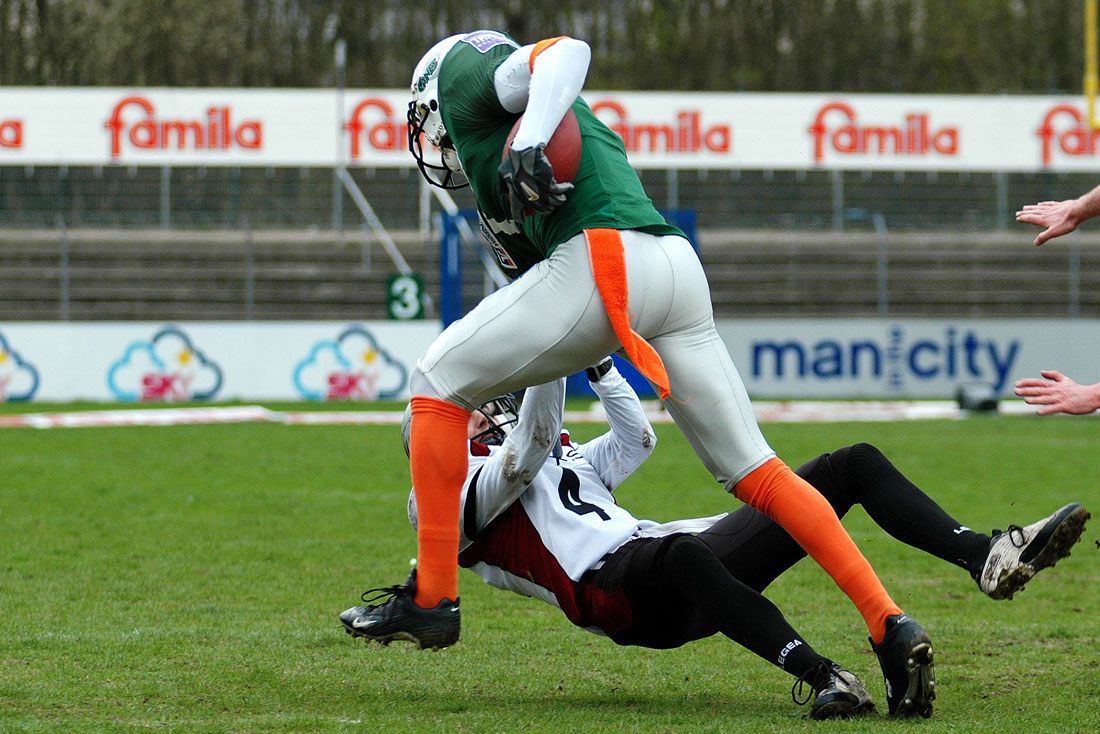By Tolly Taylor
Geoff Mogus walked to the sideline after a blow to the head sent a “tingling, burning sensation” from his head to his toes.
A concerned trainer told him, “You’ve got to let me know if you’re not feeling well. It’s not worth it.”
Still, the Northwestern University left guard reentered the November game for the final two drives of the half.
“I took it upon myself to keep playing,” said Mogus, who didn’t want to let his teammates down.
In the locker room at halftime, he threw up. The team doctor said he was done. He would later learn he had suffered his fifth concussion in five years, his final college game a 23-21 win over Penn State.
“It was a pretty routine hit,” Mogus said. “The hit was one I’ve taken a lot of times and been absolutely fine.”
Athletes like Mogus are the reason the Big Ten and Ivy League formed the Traumatic Brain Injury Research Collaboration, which lets them work with 17,500 athletes across both conferences. The Ivies led the charge, announcing five years ago that football teams would be limited to two contact practices per week. More recently, on March 1, they eliminated full-contact practices during the regular season. They’re even considering new rules for kickoffs because “a high percentage of concussions” occur during returns, said Carolyn Campbell-McGovern, the Ivy League representative on the TBI Research Collaboration Project Board.
Officials at the 4-year-old collaboration declined to reveal their budget but said a quarter of it is going toward educating players, said Kerry Kenny, the Big Ten representative on the collaboration board. “It should be OK to report concussions. There shouldn’t be a stigma attached to it.”
Mogus praised Northwestern’s protocol, but his words following his fifth concussion reveal the stigma still remains.
“I’m fine, I’m OK, I just got my bell rung,” Mogus said he told himself. “[But then] I couldn’t go back, and I just remember being devastated because my team physician said if I got one more [concussion], then that would probably be it. And so that was all I was really thinking about. Just letting the team down and not being able to go out and finish the season.”

Though Mogus didn’t try to hide his head injuries, many players do. Already, they’re learning if they sit out after a blow to the head, they’re not letting their teammates down, Kenny said.
Science should also be able to help.
“[Today] we only base the ‘diagnosis’ on symptoms,” said Dr. Doug Smith, the collaboration’s scientific director.
But Smith and other researchers are trying to create an on-the-field blood test that would quickly identify proteins released during brain trauma.
“[We would see] this person has axons that are degenerating, which is permanent brain damage, and that we have evidence of that right in their blood,” said Smith, professor of neurosurgery at the University of Pennsylvania. “But basically we’re only in the experimental stage right now.”
To improve examinations today, former Harvard football player Chris Nowinski, a founder of the Concussion Legacy Foundation and adviser to the collaboration, wants more schools to use the 40-year-old King-Devick test. It compares how long it takes athletes to read single-digit numbers at the beginning of the season vs. after a suspected head injury.

“So that’s the one that we expect [the Big Ten and Ivy League] to be adopting over the next year,” he said.
For now, both conferences have left it up to individual schools to decide which protocol to use.
“We don’t have an agreed upon baseline test,” said Campbell-McGovern. “I think there are a few different ones out there. They’re all doing something, but I’m not sure which ones.”
Most schools in the Ivy League and the Big Ten use ImPACT, a 25-minute computerized evaluation system that measures attention span, problem solving and reaction time. But as Mogus’ situation showed, it’s far from perfect.
Following each of his five concussions, Mogus said Northwestern required him to check in with a trainer every day. For about a week and a half, he felt tired, nauseous and sensitive to light. After 24 hours without these symptoms, he would take the ImPACT test and a balance test. If he passed them, he would have to exercise for 30 minutes to an hour without any side effects. Then he would need clearance from a team physician and an independent neurosurgeon. Then he would have to go through one non-contact practice before being allowed to return to regular practices.
The problem with the system: “It’s the same protocol for every concussion, no matter how severe it is,” Mogus said. “I beat my personal best [on the ImPACT test], and then I took my balance test and set a new record on that.”
He forgot the name of a subsequent four-hour test at a Chicago hospital that showed he hadn’t fully recovered from his fifth concussion.
But he remembered what his longtime neurosurgeon, Dr. Julian Bailes, told him that day: “Your short-term memory isn’t back to where it was.”
Their hour-long visit shook Mogus. Bailes never said he couldn’t play in the NFL, but he reminded Mogus he didn’t need to rely on football. He went to a good school. He had a good GPA.
“It puts things in perspective,” Mogus said. “You know, guys always joke with me, saying I’ll be able to remember who I am when I’m 40 now.”

